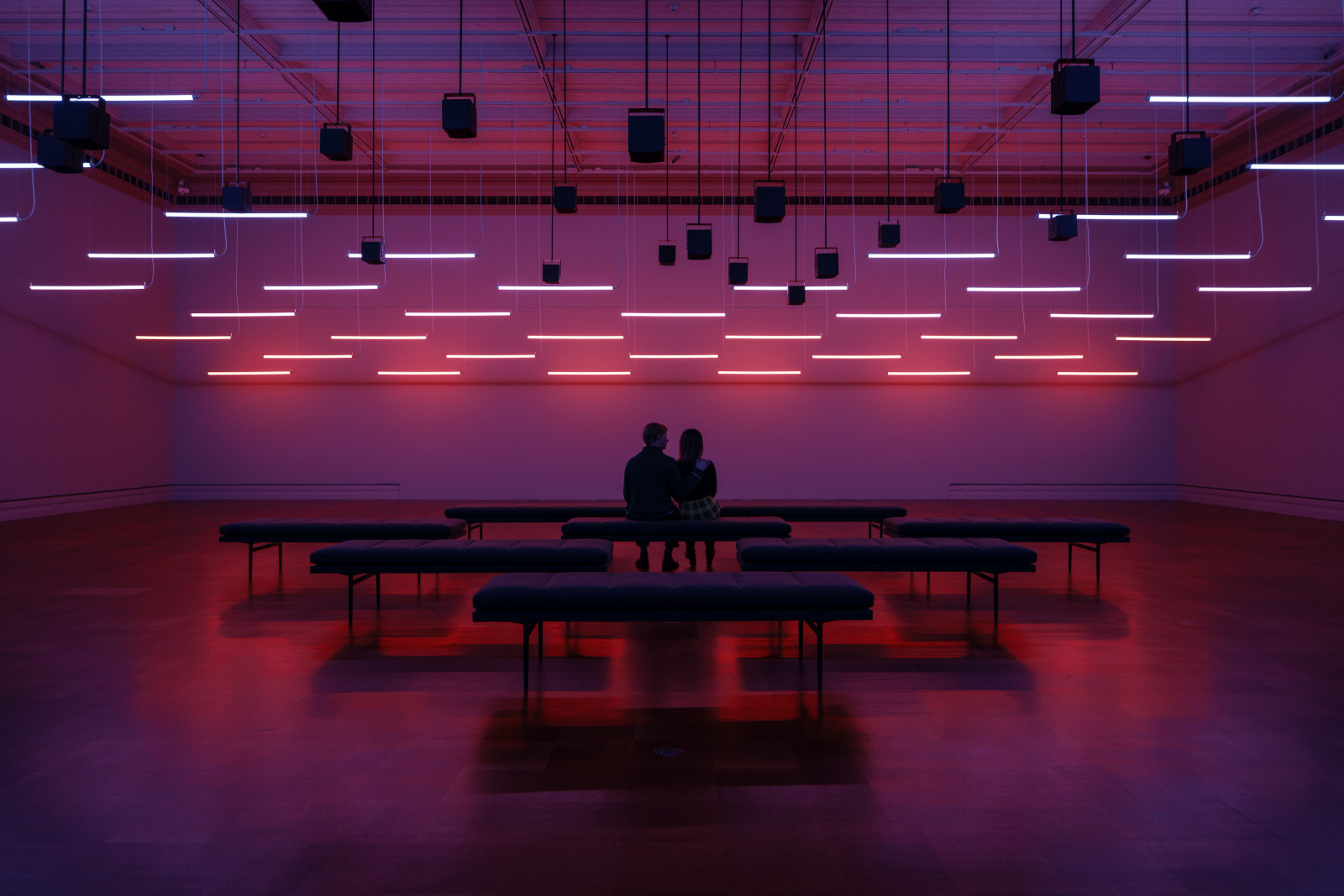Medallion with Portrait of Emperor Augustus
Medallion with Portrait of Emperor Augustus
Place of OriginSoutheast Europe, possibly Bulgaria or Romania (reportedly 'Moldavia')
Dateabout 15-30 CE
DimensionsDiam. 6 3/8 × H. 2 1/2 in. (16.2 × 6.4 cm). Weight: 220 g.
MediumGilded silver, worked in repoussé and chased.
ClassificationMetalwork
Credit LinePurchased with funds from the Libbey Endowment, Gift of Edward Drummond Libbey, by exchange
Object number
2007.11
On View
Toledo Museum of Art (2445 Monroe Street), Gallery, 02, Classic
DescriptionThe object consists of two main parts: a central silver disc and an outer silver frame. The disc was worked freehand in repoussé from both sides to create a high-relief portrait bust of an emperor emerging from an acanthus calyx. The background is decorated in low relief with a hunt scene—a lion, a boar, and three dogs—and the entire ground is covered with fine stippled patterns. Key details on the portrait, armor, animals, and background are gilded. The outer frame is made of a heavier band of silver and is attached to the disc with sixteen silver rivets. The reverse shows evidence of two ancient rectangular patches, which are standard workshop repairs.
Label TextThis powerful portrait of Augustus, the first Roman emperor, was created after his death to honor him as a god. He wears a victor’s laurel wreath and a general's armor, while the acanthus leaves beneath him symbolize his divine status. In the gilded background, hunting dogs pursue a lion and a boar, celebrating the emperor's courage.
The style and large size of this gilded silver disc, or phalera, are closely related to elaborate decorations for horse harnesses found in ancient Thrace (modern Bulgaria and Romania). It was likely made in a workshop on the Roman frontier as a magnificent emblem for the chest of a high-ranking officer's horse, though it could have also served as a military standard.
Published ReferencesToledo Museum of Art, Toledo Museum of Art Masterworks, Toledo, 2009, p. 82, repr. (col.).Carter, Martha, Arts of the Hellenized East: Precious Metalwork and Gems of the Pre-Islamic Era, London, Thames & Hudson, 2015, pp. 138, 149, fig. 2.14.
Comparative ReferencesMarazov, Ivan, ed. 1998. Ancient Gold: The Wealth of the Thracians. Treasures from the Republic of Bulgaria. New York: Harry N. Abrams. See also P. Jacobsthal & A.H.M. Jones, "A Silver Find from South-west Asia Minor," Journal of Roman Studies 30 (1940) 16-31.See also Cornelius C. Vermeule III, "A Greek Theme and its Survivals: The Ruler's Shield (Tondo Image) in Tomb and Temple," Proceedings of the American Philosophical Society, vol. 109, no. 6 (December 1965) 361-397.
See also Rudolf Winkes, Clipeata Imago: Studien zu einer römischen Bildnisform (Bonn: Rudolf Habelt Verlag, 1969).
See also Lino Rossi, transl. by J.M.C. Toynbee, Trajan's Column and the Dacian Wars (London and New York: Thames and Hudson, 1971).
See also H. Russell Robinson, The Armour of Imperial Rome (New York: Charles Scribner's Sons, 1975).
See also Romans & Barbarians, ed. Sandra K. Morgan, exhibition catalogue, 17 December 1976 - 27 February 1977 (Boston: Museum of Fine Arts, 1976).
See also P. La Baume, "Signumscheibe und Merkurrelief von Niederbieber, " Bonner Jahrbücher, vol. 177 (1977) 565-568.
See also Die Bildnisse des Augustus: Herrscherbild und Politik im kaiserelichen Rom, ed. Klaus Vierneisel and Paul Zankeer, exhibition catalogue, Glyptothek und Museum für Abgüsse Klassischer Bildwerke (Munich: Glyuptothek 1979).
See also H. G. Horn, "Cohors VII Raetorum equitata. Signumscheibe aus Niederbieber," Das Rheinische Landesmuseum Bonn: Berichst aus der Arbeit des Museums (1982) 52-55.
See also M. Brouwer, "Römische Phalerae und anderer Lederbeschlag aus dem Rhein," Oudheidkundige Mededelingen, vol. 63 (1982) 145-187
See also Beryl Barr-Sharrar, The Hellenistic and Early Imperial Decorative Bust (Mainz: Verlag Philipp von Zabern, 1987).
See also R.R.R. Smith, "The Imperial Reliefs from the Sebasteion at Aphrodisias," Journal of Roman Studies vol. 77 (1987) 88-138.
See also Guy MacLean Rogers, The Sacred Identity of Ephesos: Foundation Myths of a Roman City (New York: Routledge, 1991).
See also Lucia Pirzio Biroli Stefanelli, L'Argento dei Romani: Vasellame da Tavola e d'Apparato (Rome: "L'Erma" di Bretschneider, 1991).
See also Diana E. E. Kleiner, Roman Sculpture (New Haven, CT: Yale University Press, 1992).
See also Ancient Gold: The Wealth of the Thracians; Treasures from the Republic of Bulgaria, ed. I. Marazov, exhibition catalogue (Washington, D.C.: The Trust for Museum Exhibitions, 1997).
See also Argenti a Pompei, ed. Pietro Giovanni Guzzo, exhibition catalogue, Museo Archeologico Nazionale, 2 April - 11 September 2006 (Milan: Electra, 2006).
See also R.R.R. Smith, Roman Portrait Statuary from Aphrodisias (Mainz am Rhein: Verlag Philipp von Zabern, 2006).
mid 19th century
about 1740
about 220-130 BCE
Probably first half of 1st century
about 1785 (Frame about 1820)
Shunsho
early 17th-late 19th Century
about 600 BCE
1st century BCE - 1st century CE

Membership
Become a TMA member today
Support TMA
Help support the TMA mission












